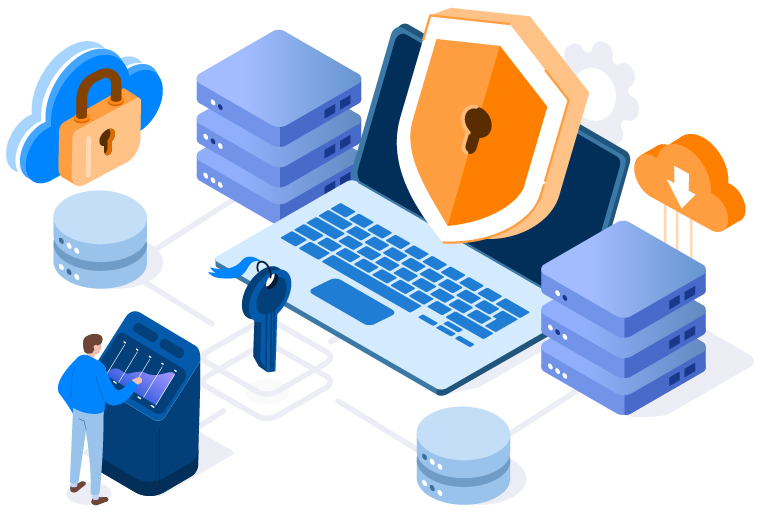As cyber threats have evolved, so has the security landscape — with incredible resources being allocated to protect company assets and keep bad actors at bay. Endpoint security today has seen a transition from endpoint detection and response (EDR) to extended detection and response (XDR), which pushes the capabilities of EDR and offers holistic protection for endpoints, networks, and enterprise workloads.
What is Endpoint Detection and Response (EDR)?
Endpoint security includes Endpoint Detection and Response (EDR), also known as endpoint detection and threat response (EDTR) which constantly monitors endpoints and performs console alerting and reporting — offering an advanced response to security incidents like malware, ransomware, or 0-day attacks.
EDR has evolved to protect against sophisticated cyber threats, with the most complex ones offering protection and performing adaptive security architecture tasks such as hardening, incident detection, and response. In recent years, endpoint security was enhanced even further, developing into a complex system known as an Endpoint Protection Platform (EPP), including NGAV, EDR, and XDR.
XDR: The Future of EDR
As EDR solutions posed several challenges for organizations, XDR solutions have emerged to offer more robust protection while offering visibility to the entire organization. Introduced in 2011, the kill chain concept describes an environment in which security controls are replaced with a careful analysis of potential steps a bad actor would encounter to successfully breach a company. The kill chain model enables organizations to place security controls at every attack level, ensuring that attackers will hit an impediment at each step of their movement.

The main differentiator between EDRs and XDR is the full visibility that XDR provides. All phases of an attack are kept in focus, offering the possibility to stop, investigate and mitigate cyber threats at any level.
Benefits of XDR
- XDR can drastically improve security by offering extended capabilities and benefits such as:
- Transforming alerts into larger incidents that can be easily investigated
- Automation for repetitive tasks
- Common management and workflow experience across security components
Use cases where continuous authentication best complements any XDR security solution
In the “kill chain” model, XDRs carefully analyze every step an attacker might make when trying to gain access to an endpoint. But when a continuous authentication-based approach is layered on top, XDR solutions can cover an even wider range of attack vectors.
One interesting example is the Evil Maid Attack, documented in 2009 by security analyst Joanna Rutkowska in which unattended devices (especially while traveling), are exposed to new attack vectors. In an Evil Maid attack, even full disk encryption systems wouldn’t be safe as hackers can modify the encryption system’s loader codes to steal passwords from the victim to gain entry to the computer.

Particularly in sectors where sensitive information, high regulatory standards, and SLAs are at the core of the business, XDR solutions should be complemented with continuous authentication. Industries like business process outsourcing (BPO), customer contact centers, and governmental institutions operate with highly sensitive information that must be protected. In risky scenarios like intentional device sharing, continuous authentication based on typing biometrics is necessary to maintain data security. With many employees in BPO and customer service now working from home, concerns about how sensitive client data is being handled and protected are top of mind. Continuous authentication is an extra step of caution that lowers the chances of unauthorized users accessing company devices.
Other use cases demanding comprehensive protection include a work-from-anywhere environment in which company devices are more vulnerable than ever. Other security breaches might occur even because of a careless approach toward security policies. Shared devices with friends and family might only be one example of possible security policy violations.
ActiveLock: Continuous authentication based on typing biometrics analysis

ActiveLock continuous authentication based on typing biometrics comes after years of research and development. ActiveLock complements any zero-trust framework by verifying that only authorized users access the company’s endpoints. Specifically, if a user steps away from their workstation without logging out or an unauthorized person tries to use it, ActiveLock continuous authentication will automatically lock the device.
As shown in this article, EDR has evolved into XDR, striving for an almost real-time response by IT teams. Organizations now have a unified view of security events across multiple layers and can respond to attacks instantly. By complementing this with a typing biometrics-based continuous authentication, the resulting security solution closes yet another crucial security gap in the kill chain model and starts the zero-trust framework.
Try ActiveLock yourself with a free download 👇

